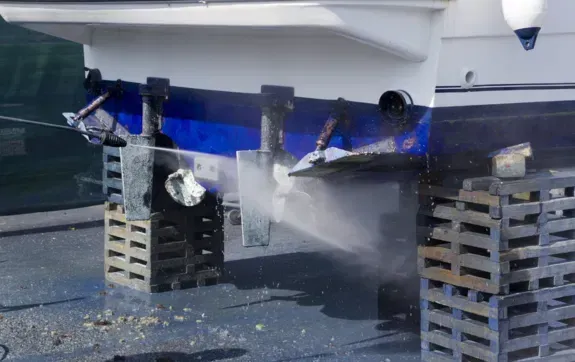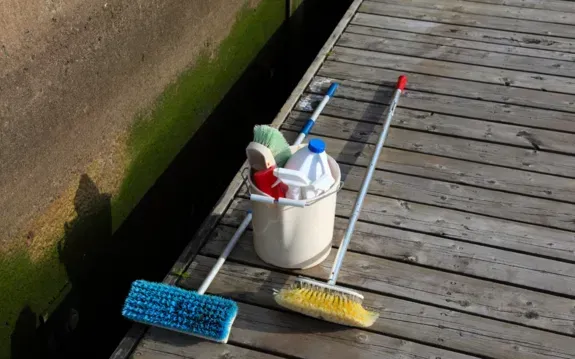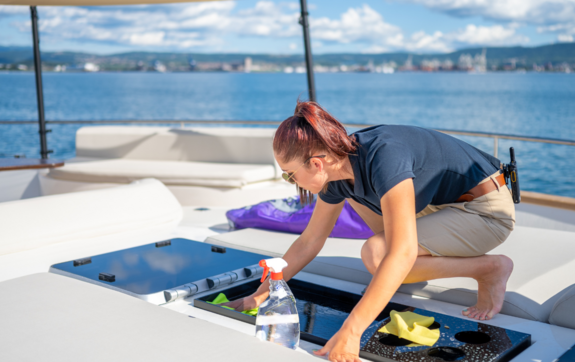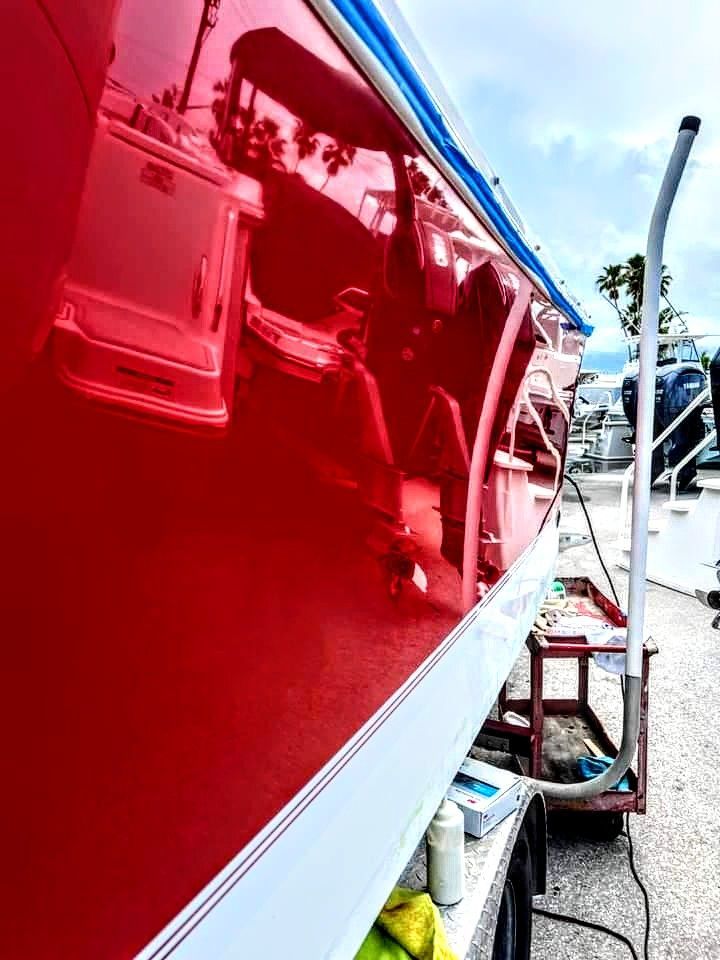How to Remove Oxidation from Your Boat’s Hull and Restore Its Shine

If your boat’s hull has lost its luster and appears chalky or faded, oxidation is likely to blame. Oxidation occurs when the gel coat, fiberglass, or painted surfaces of your boat are exposed to UV rays, saltwater, and other environmental elements over time. This not only diminishes the boat's aesthetic appeal but also affects its resale value. At Treasure Coast Boat and Yacht Detailing, we specialize in professional oxidation removal services that restore your boat’s hull to its original shine. In this blog, we’ll guide you through the process of removing oxidation and explain how our expert detailing services can keep your boat looking brand new.
Understanding Oxidation: What Causes It?
Oxidation is a chemical reaction that occurs when your boat’s gel coat or paint reacts with oxygen, UV rays, and environmental pollutants. It often manifests as a dull, chalky appearance on the hull’s surface, making your boat look old and neglected. The severity of oxidation can range from light surface discoloration to deep, stubborn oxidation that requires professional attention.
Step-by-Step Guide to Removing Oxidation from Your Boat’s Hull
Properly removing oxidation involves several key steps, from cleaning and compounding to polishing and sealing. Here’s a step-by-step guide to help you tackle oxidation and restore your boat’s shine.
1. Thoroughly Clean the Hull
Before addressing oxidation, it’s crucial to start with a clean surface. Use a marine-safe soap and water to wash away dirt, grime, salt, and other contaminants that can interfere with the oxidation removal process. Pay special attention to removing any algae, barnacles, or scum that may be clinging to the hull.
How We Help: At Treasure Coast Boat and Yacht Detailing, our exterior cleaning services ensure your boat’s hull is thoroughly washed and prepped before oxidation removal. We use specialized marine cleaning products that effectively eliminate dirt without damaging the gel coat.
2. Assess the Level of Oxidation
Next, assess the level of oxidation on your boat’s hull. Light oxidation may appear as a faint chalky residue, while severe oxidation looks much duller and may have visible pitting or rough spots. This assessment will determine the type of compound or polish needed.
How We Help: Our detailing professionals at Treasure Coast Boat and Yacht Detailing evaluate the severity of oxidation and select the appropriate techniques and products to achieve the best results.
3. Use a Cutting Compound to Remove Oxidation
For mild to moderate oxidation, a cutting compound can effectively remove the oxidized layer of the gel coat. Compounding involves using an abrasive compound that cuts away the damaged layer to reveal the fresh, shiny surface underneath. Apply the compound with a rotary buffer or dual-action polisher using moderate pressure, working in small sections.
How We Help: We utilize advanced compounding techniques with high-quality products that safely remove oxidation without harming the underlying surface. Our team is skilled in using buffers and polishers to ensure an even finish and restore the hull’s shine.
4. Polish the Hull to Restore Shine
After compounding, the next step is polishing. Polishing smooths out the surface left by compounding, enhancing the gloss and shine of the hull. Use a marine-specific polish and a soft polishing pad, working in overlapping strokes to achieve a high-gloss finish.
How We Help: Treasure Coast Boat and Yacht Detailing offers expert polishing services that bring out the vibrant shine of your boat’s hull. We use top-of-the-line polishes that enhance gloss and offer UV protection.
5. Apply a Protective Wax or Sealant
The final step in restoring your boat’s hull is applying a protective wax or sealant. Waxing adds a protective barrier that shields the gel coat from future oxidation, UV damage, and saltwater exposure. Choose a high-quality marine wax specifically designed for your boat’s surface.
How We Help: Our exterior detailing services include the application of premium marine waxes and sealants that protect your boat from environmental damage. We ensure a smooth, glossy finish that not only looks great but also extends the lifespan of your boat’s surfaces.
Why Professional Oxidation Removal Is the Best Choice
While some boat owners may attempt DIY oxidation removal, the process can be time-consuming and requires specialized tools and knowledge to achieve professional results. Improper compounding or polishing can lead to uneven surfaces, swirl marks, or further damage to the gel coat.
At Treasure Coast Boat and Yacht Detailing, our experienced team has the expertise and equipment to remove oxidation safely and effectively. We tailor our oxidation removal services to your boat’s specific needs, ensuring a stunning finish that protects your investment.
Maintaining Your Boat’s Shine: Preventative Tips
- Regular Cleaning: Rinse your boat after every use, especially after saltwater exposure, to prevent salt buildup and surface damage.
- Apply UV Protectants: Use UV protectants on both exterior surfaces and vinyl to shield your boat from harmful rays that cause oxidation.
- Schedule Routine Detailing: Regular professional detailing keeps your boat looking great and helps prevent oxidation from taking hold.
Conclusion
Oxidation can significantly impact the appearance and performance of your boat, but with the right approach, it’s possible to restore your hull’s shine and protect it from future damage. At Treasure Coast Boat and Yacht Detailing, we offer professional oxidation removal and hull restoration services that rejuvenate your boat, making it look as good as new.
Contact us today to schedule your oxidation removal service and let our detailing experts restore the beauty of your boat’s hull.









